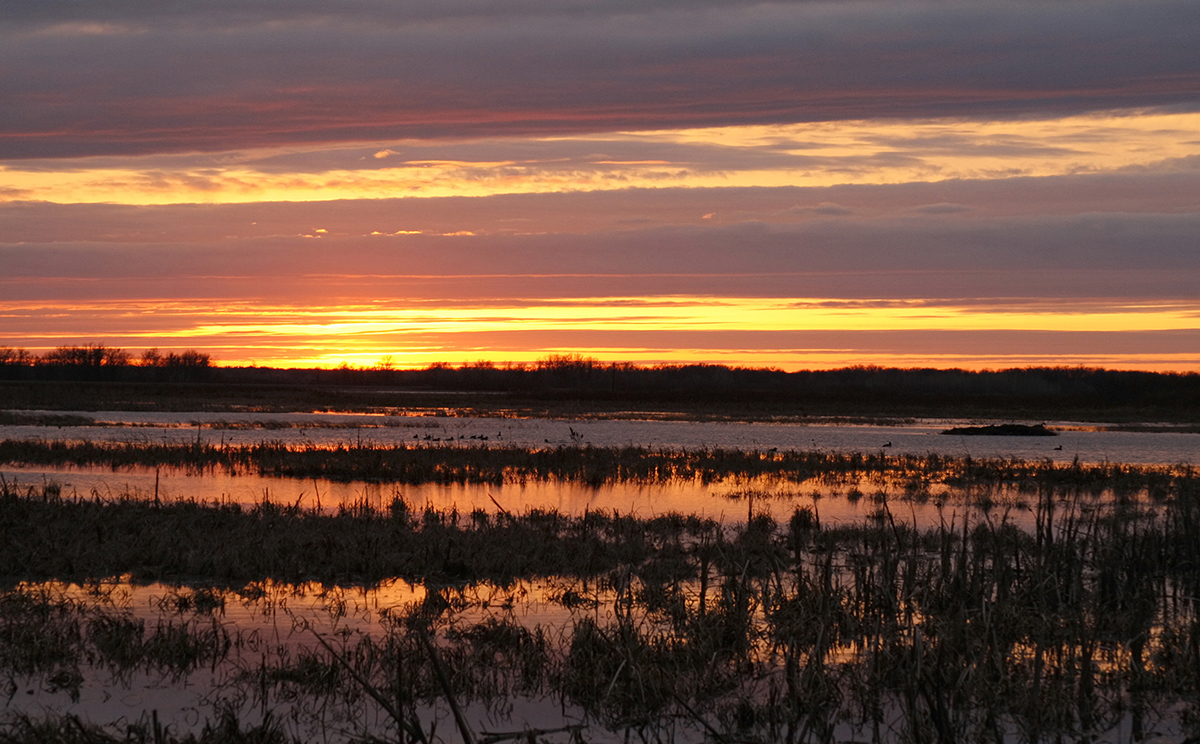Wetlands Council Awards $2.08 Million for Great Lakes Conservation
Four different GLI projects across three states will protect 2,195 acres
Four different GLI projects across three states will protect 2,195 acres

The North American Wetlands Conservation Council recently approved $4.78 million in North American Wetlands Conservation Act Small Grant proposals. Ducks Unlimited’s (DU) share of that funding will impact nine different sites. DU’s Great Lakes Initiative (GLI) was allocated $831,000. The funds will be used to conserve 2,195 acres in Michigan, Ohio and Wisconsin.
The goal of the GLI is to restore, enhance and protect wetlands and grasslands, including coastal and riparian marshes and smaller interior wetlands on public and private lands throughout the Great Lakes watershed.
“Our GLI team is working hard every day to leverage DU’s investments and return more wetlands to the watershed,” said DU Manager of Conservation Programs Brian Glenzinski. “The Wetlands Conservation Council award is the result of a continued effort from our dedicated biologists to deliver high-quality habitat that benefits migratory, a variety of animal species and the people living in this area, who receive several ecological services from these projects.”
The four GLI projects include:
Upper Mississippi Focus Area II, Wisconsin ($226,000)
Phase II of this project will protect 100 acres—20 at Trempealeau National Wildlife Refuge (NWR) and 80 at Van Loon Wildlife Area—of high-priority wetlands per the Wisconsin Waterfowl Habitat Conservation Strategy. There will also be waterfowl breeding, brood-rearing and migration enhancements of 475 acres at Trempealeau NWR. The combination of emergent wetlands and floodplain forest at both public land sites will benefit nesting mallards, blue-winged teal and wood ducks. It will also offer refuge to other species of migratory waterfowl, water birds and wildlife.
The Van Loon Bottoms and Upper Mississippi River/Trempealeau Wildlife and Fish Refuges Important Bird Areas (IBA) are in a flight corridor used by hundreds of thousands of waterfowl, songbirds and raptors, including half of the eastern canvasback population and 20% of tundra swans. Van Loon Bottoms IBA surrounds the lower portion of the Black River and features an extensive floodplain forest that provides habitat for yellow-crowned night herons, Acadian flycatchers, cerulean warblers, prothonotary warblers and other migratory birds.
Mallard Club Wildlife Area Coastal Wetlands, Ohio ($250,000)
Degraded wetland conditions due to a loss of water level control will be addressed by designing and installing a new pump, pump basin and five water-control structures. This new wetland management infrastructure will restore control of water levels on 261 acres of coastal marsh contained in four managed units, allow for independent water level management among the four wetlands and reconnect the wetlands with Lake Erie. The habitat supports breeding and migrating waterfowl, wetland-dependent migratory birds and allows more waterfowl hunting and other outdoor recreation opportunities. Ohio's Department of Natural Resources matched the NAWCA funds with a $250,000 from its H2Ohio program.
Champion Wetland Connector, Ohio ($185,857)
Trumbull County MetroParks (TCMP), in partnership with DU and the Western Reserve Land Conservancy will acquire and protect the Champion Wetland Connector, a 117-acre parcel of land in Trumbull County. The Connector includes 35 acres of emergent marsh, forested and scrub-shrub wetlands, 19 acres of upland deciduous forest and 63 acres of agricultural fields. The ag field will be restored to prairie pollinator habitat. TCMP will own and manage the site as a nature preserve that is open to the public. Western Reserve Greenway, a 50-mile rail-trail that links Trumbull and Ashtabula Counties is adjacent to the Connector.
Bay Creek Farms Lake Erie Coastal Wetland Protection, Michigan ($170,000)
DU is purchasing a 200-acre conservation easement adjacent to more than 4,600 acres of protected coastal wetlands and uplands along the shores of Lake Erie. This area provides critical breeding, migrating and wintering habitat for waterfowl and other wetland birds. These wetlands are also home to several shorebirds and waterbirds, such as lesser yellowlegs, dunlin, semi-palmated sandpipers, common terns and American white pelicans as well as endangered species like the American bittern. Coastal protection and the improved function of the remaining wetlands will help safeguard coastal communities as predicted changes in climate occur in the Great Lakes.